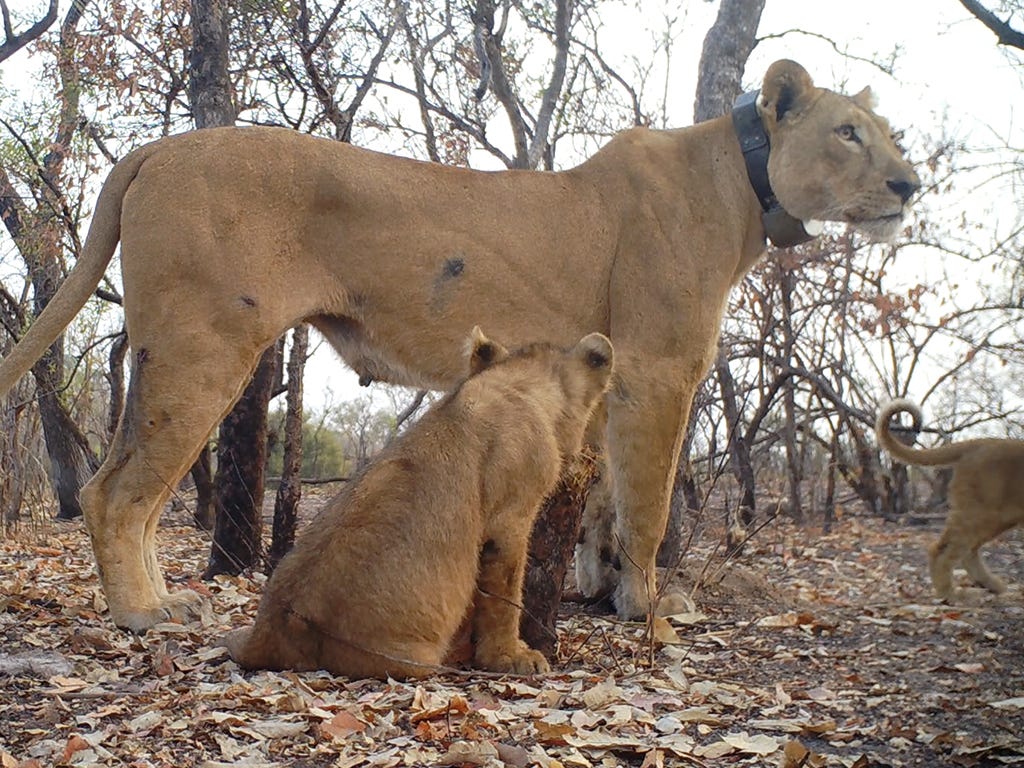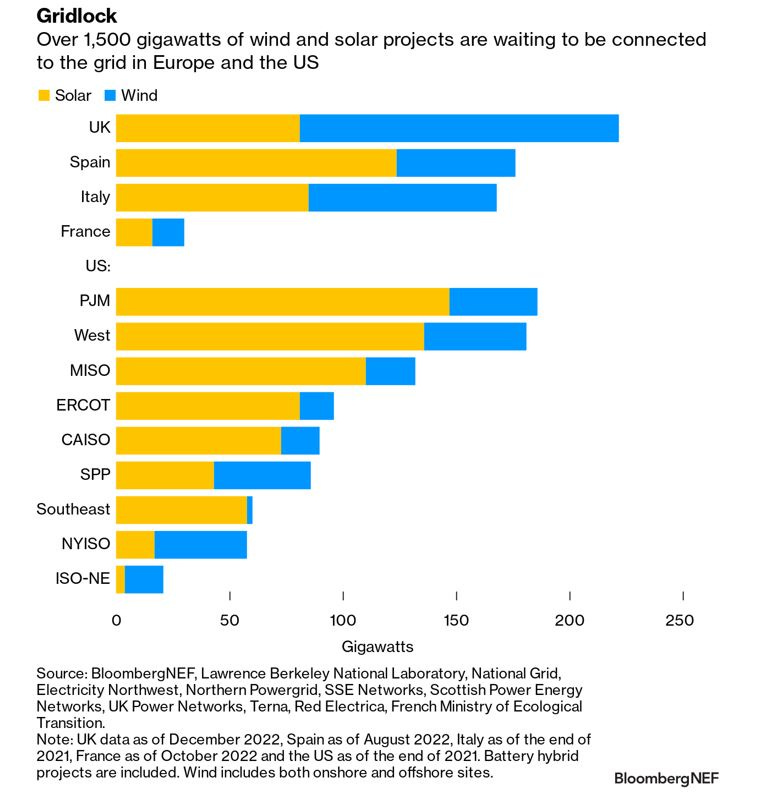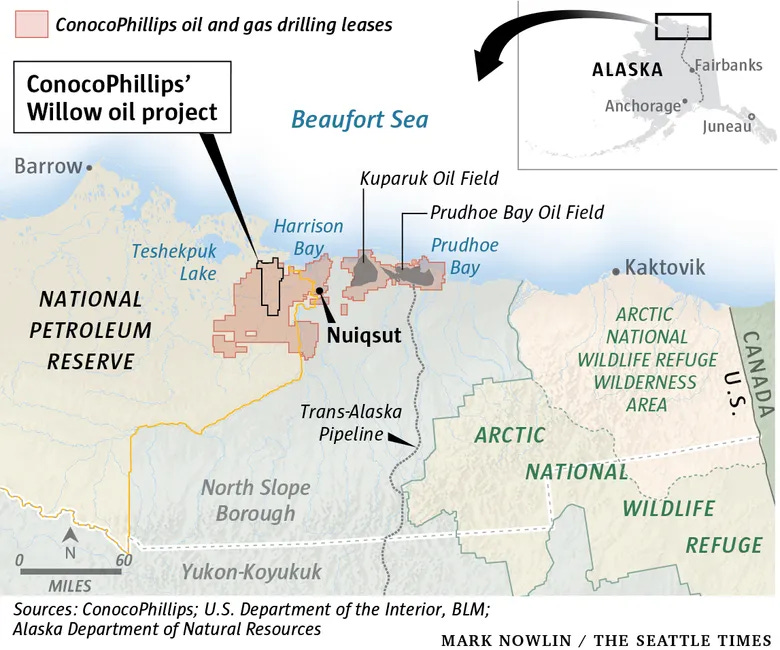The Weekly Anthropocene, March 15 2023
Lions in Senegal, bison on tribal lands, clean energy surges and setbacks, and more!
Senegal
The West African subpopulation of lions is critically imperiled, with only an estimated 120 to 374 remaining in the wild, far from the thousands of lions living in protected strongholds in eastern and southern Africa. However, Senegal’s Niokolo Koba National Park has been a bright spot, with conservation efforts from renowned NGO Panthera helping bring the lion population up from 10-15 individuals in 2011 to 30 today.
Now, new camera trap footage reveals that a lioness known as “Florence” has given birth to three cubs (her third litter!) in the park, boosting the population still further. Florence is now the mother of about one-third of the entire park’s lion population: three of her older cubs have formed the park’s first “coalition,” a “team” of friendly male lions that live together. Great news!
American Bison
The Biden Administration’s Interior Department will be using $25 million in Inflation Reduction Act funds to boost bison conservation across America, managed by a new Bison Working Group and Bison Management Apprenticeship program. The funds will be used to establish new bison herds, support prescribed-fire efforts to maintain grassland ecosystems, and support the transfer of American bison to Native American tribal lands. This is an extraordinary culmination to a historic decades-long reversal in American bison policy: in the mid-1800s, the US government killed as many bison as possible with the express intent of depriving Plains Native Americans of their livelihoods. Now, under the Biden Administration and the first Native American Interior Secretary, the United States is finally working to give bison back to its Native American citizens!
“The rapid disappearance of the game [bison] from the former hunting-grounds must operate largely in favor of our efforts to confine the Indians to smaller areas, and compel them to abandon their nomadic customs.”
-Secretary of the Interior Columbus Delano, a white man, 1872
“While the overall recovery of bison over the last 130 years is a conservation success story, significant work remains to…provide for the return of bison to Tribally owned and ancestral lands. New historic funding from the Inflation Reduction Act will help support the Department’s efforts to restore this iconic species and integrate Indigenous Knowledge into our shared stewardship goals.”
-Secretary of the Interior Deb Haaland, a Native American woman, 2023
Clean Energy
The US Energy Information Administration (EIA) calculates that 84% of new electricity-producing capacity set to come online in the United States in 2023 will be from clean energy, with solar, battery storage, wind, and a tiny bit of nuclear all contributing carbon-free power! That’s up from 78% clean energy in new power capacity built in 2022.
Furthermore, it’s important to keep in mind that this only counts the projects that the EIA expects will come online and start generating electricity this year. There are lots and lots more renewables projects in the pipeline, but these are the ones that have made it through grid interconnection problems, permitting issues, and construction supply chain woes to be confidently listed as nearing completion.
And finally, these projects set to finish in 2023 had all made it through major investment decisions before the Inflation Reduction Act was passed in August 2022. Future renewables projects will be substantially cheaper and more financially attractive thanks to new federal funding, likely making clean energy even more dominant in America’s energy future!
United Kingdom demand for coal has fallen to its lowest level in 266 years. The last time Britain used this little coal was in 1757, when George II was the British king and Mozart was in diapers. The UK is set to completely stop using coal for electricity generation by October 2024. And for context: UK greenhouse gas emissions overall have now fallen 49% below 1990, even as their economy has grown 75% over the same period! A classic “decoupling” of emissions from economic growth (now the case in 32 countries, even when accounting for offshoring!). We can indeed have it both ways!
On March 8th, the Biden Administration made available $6 billion in Bipartisan Infrastructure Law and Inflation Reduction Act funding for the Department of Energy’s Industrial Demonstrations Program, set to fund decarbonization projects in high-emitting, hard-to-abate industries like cement, concrete, aluminum, paper, wood pulp, chemicals, ceramics, glass, iron, and steel. Applications are due by August 4, 2023. On the same day, they also launched the Federal-State Buy Clean Partnership (with 12 early state members, including Maine!) to work to preferentially procure low-carbon materials for government infrastructure projects, helping establish a market for these lower-carbon industrial products. A vital step towards economy-wide decarbonization! Great news.
A massive new pumped hydro energy storage project has filed for final licensing approval in Nevada, and is now on the verge of becoming a reality. Pumped hydro is a radically simple approach to energy storage (and an excellent partner to renewables), using excess power to pump water uphill and letting it run back downhill to turn turbines when more energy is required. The 1-gigawatt (1,000 MW) White Pine Energy Storage project, from developer rPlus Energies (which has 13 pumped hydro projects in development across America), could start storing power in 2031 if it successfully navigates the 2 years of application review and 5-6 years of construction. When completed, White Pine will store enough renewable energy to meet one-eighth of Nevada’s peak power demand all by itself!
After an Oval Office meeting, President Biden and European Commission President Ursula von der Leyen announced that they are immediately beginning work to form a new trade pact that will allow critical minerals for battery manufacturing extracted or processed in the European Union to benefit from Inflation Reduction Act subsidies when used in American electric vehicles, as if the minerals had been processed in the United States.
Belgium is set to start building the world’s first artificial energy island in 2024, at a point in the North Sea about 45 kilometers off their coastline. The island will serve as a high-voltage electricity infrastructure linking point, helping channel power from the in-development 3.5 GW Princess Elisabeth offshore wind area to the onshore grid. It’s set to span 5 hectares, include a harbor and a helipad, and be completed in 2026. This could eventually become a model for other offshore wind-rich sites around the world!
Canary Media reports on a burgeoning new field of enterprise: companies that help customers navigate the landscape of home electrification, producing personalized home electrification roadmaps, calculating how much money you could save, and even managing the project itself by lining up suitable contractors for customers to select from, then handling their payment. There’s already at least one such “residential electrification helper” startup in this writer’s home state of Maine: Amply Energy. This will likely be a fast-growing, highly valuable sector as Inflation Reduction Act rebates and tax credits become more well-known!
Over 1,500 gigawatts of solar, wind, and battery projects in the US and Europe are currently waiting for permission to be connected to the grid to move forward with construction, adding up to more than the entire current electricity generating capacity of the United States! Unfortunately, this immense backlog makes it likely that only a small fraction of these projects will get built, as grid improvements take time and are currently underfunded (although the Inflation Reduction Act provides new grid funding, helping somewhat).
Overall, this is a relatively really good problem to have: lots of solar and wind power projects backed up due to lack of grid capacity means that lots of companies want to build solar and wind power projects! The market is completely aware now that renewables are the future. It’s critical for proponents of climate action to spread this message: one of the most important bottlenecks left to the renewable energy transition is building out the grid. Citizens concerned about climate change need to support any new proposed power lines near them!
Alaska
Disappointingly, the Bureau of Land Management on March 13th approved ConocoPhillips’ Willow Project, set to drill for oil in Alaska’s National Petroleum Reserve lands. The Weekly Anthropocene mostly focuses on underreported good climate and environmental news (of which there is a lot!), but thought it was worth taking a moment to put this widely reported setback in perspective.
Many had hoped that President Biden would use executive authority to halt the Willow Project, but it seems likely that shutting down already-sold drilling leases like that wouldn’t have held up in court. The Willow Project was probably going ahead no matter what Biden chose. Furthermore, the political context is important here: Alaska’s entire congressional delegation, including moderate Republican Senator Lisa Murkowski and newly elected Democratic Representative Mary Peltola, have been lobbying in favor of the Willow Project. Perennial fossil fuel-loving swing Senator Joe Manchin, whose vote was critical to passing the Inflation Reduction Act, is also a big fan. This means the approval potentially buys some negotiating room for the president on other energy issues.
Near-inevitable as the approval may have been, it’s still a bad project: the greenhouse gas emissions from the proposed production and combustion of oil from the Willow Project for 30 years are estimated to be roughly equivalent to running 2 new coal-fired power plants for 30 years. (For context, 290 US coal plants closed from 2010 to May 2019, more have closed since then, and many more are set to retire in the coming years). As many have noted, in a final darkly ironic touch, the Willow Project will require huge “thermosyphon” chilling machines to keep the permafrost near drilling pads frozen: holding off the impacts of climate change to make possible actions that contribute to the crisis.
However, this isn’t quite the unalloyed tragedy it first appears. President Biden and the Interior Department did attempt to prevent more projects like Willow from going forward in the future, by designating 2.8 million acres in the Beaufort Sea as indefinitely off limits for oil and gas drilling and starting a rulemaking process to limit future oil and gas leasing (and other industrial development) for 13 million more acres in the National Petroleum Reserve’s tundra ecosystems on land.
And even the Willow Project itself, while bad (we should not be expanding fossil fuel development!) it isn’t nearly as bad as it seems. It takes a long time for big new energy projects to start producing stuff, and while that’s frustrating for big new renewables projects, it works in the planet’s favor when fighting the last gasps of the fossil fuel industry. Even assuming that Willow manages to actually get built on schedule, navigating court challenges and serious engineering problems in a fast-warming ecosystem (a big assumption), it would only start pumping oil in 2029. That’s the soonest it could start, in a world where everything goes “perfectly” from an oil executive’s perspective. And at the rate renewables and electric vehicles are growing, there might not be any serious demand for oil from the Willow Project by 2029; there’ll surely still be some demand for oil, but with that demand likely contracting, it’ll likely be cheaper to source oil from existing drilling sites. As the always-sharp Emma Marris writes in The Atlantic, “[Willow] will be obsolete before the ribbon is cut” and “probably won’t do much of anything.” And that’s just the economic factors: future environmental regulations or new waves of financiers’ withdrawal from fossil fuel expansion could also sink the project before it starts.
So, in sum, President Biden protected a huge swathe of Arctic lands and got a talking point to help shore up support among moderates in Congress and in the 2024 elections. In exchange for which, he didn’t stop a new oil project that he probably couldn’t have stopped anyway, and which might start doing climate damage in 2029-but also might very well end up unprofitable or unfunded and never pump any oil at all. The approval of the Willow project is a retrograde step, but overall represents “one step backward” on the clean energy transition, while the US and the world overall are taking “ten steps forward!”








